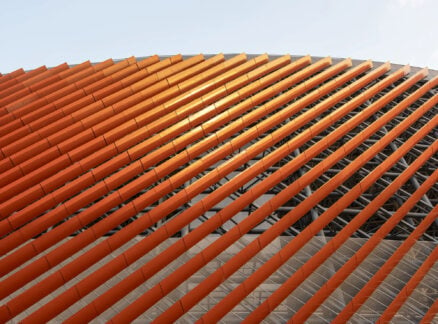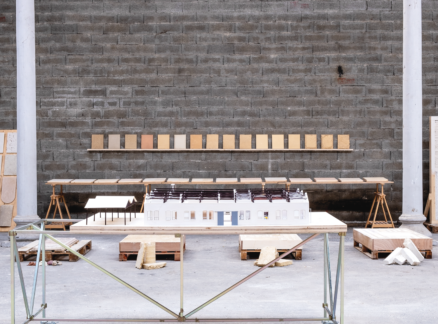January 1, 1970
A Healthy Return: The Business Case for Well-Being in the Workplace – Chicago 2018
On March 14th, 2018, Susan S. Szenasy, our director of design innovation, sat down with a panel of design experts at the Chicago offices of Haworth, to learn more about how improving office design with a focus on workplace wellness can reduce employee turnover and improve performance. The conversation focused on how flexibility and employee […]
On March 14th, 2018, Susan S. Szenasy, our director of design innovation, sat down with a panel of design experts at the Chicago offices of Haworth, to learn more about how improving office design with a focus on workplace wellness can reduce employee turnover and improve performance. The conversation focused on how flexibility and employee engagement are critical tools for creating a workplace that reduces stress and fosters productivity, rewarding not only the organization, but also individuals.
Susan S. Szenasy, our director of design innovation, moderated a discussion at the Chicago offices of Haworth, a workplace furniture manufacturer. The panel included Scott Conine, COO of Rise Interactive, Kyle Kamin, Executive VP of CBRE, Global Advisory and Transaction Services, Anjell Karibian, Senior Workplace Design Strategist, Haworth, Theresa Williams, Principal, Design Director, NELSON. What follows is a transcript of that conversation, edited for clarity by Sam White.
Susan S. Szenasy, director of design innovation, Metropolis (SSS): Could you tell us what your company does so we get a sense of your design program?
Scott Conine, COO, Rise Interactive (SC): Rise Interactive is a digital marketing agency, but we prefer to think of ourselves as interactive investment managers for chief marketing officers. Many of our employees were investment bankers before. In the advertising agency environment they continue to ask, “How do we make a lot of money?” That perspective positions the conversation to repurposing the marketing budget as an investment.”
Kyle Kamin, executive VP, CBRE, Global Advisory and Transaction Services (KK): The focus of CBRE’s real estate business has been technology, media companies, and more traditional businesses like law firms. These industries are focused on winning the talent war, and innovating through real estate in order to recruit and retain the best talent.
During the recession, the challenge in real estate was to reduce office footprints and occupancy costs. Companies had to compensate for taking personal space from employees with services and amenities. When I first started, companies made decisions catering to their most senior executives. Today, the paradigm is to accommodate not just the younger workforce but the future workforce.
SSS: How can designers and real estate developers anticipate shifts in order to be relevant in the next five to fifteen years?
Anjell Karibian, senior workplace strategist, Haworth (AK): It’s beneficial to focus on the individual. In order for younger generations to be the most productive, they need to attach in a meaningful way to the greater whole of an organization. Real estate is a costly investment, but the pendulum has shifted. Retaining the level of talent that sustains a business is a paramount issue for any business leader.
SC: On a similar note, I recently heard someone say something for the first time in my career. They said they were leaving Chicago and our company because they wanted to ski and I thought, “What? You want to go ski?” I realized that it was the first time talent had been so transparent about what they value.
SSS: Does that anecdote about skiing point to a larger desire to balance tech with connections to nature?
SC: Natural elements certainly factored into our search for a new office space. Dark, big box spaces couldn’t create the humane experience we wanted our employees to have. We wanted a space that brought in a lot of natural light, and in downtown Chicago that was challenging. The space we chose has an offset core, which enabled us to center the space around the employees. There is a huge atrium with three stories of windows flooding our office, and there is an outdoor patio. One idea that we thought was brilliant at first had to be modified. We built a café in the center of our space to symbolize and encourage internal collaboration. We put low-profile lounge seats in the middle, thinking, this is what cafes do, right? But then, no one sat in our brand new, beautiful Haworth chairs, so we created sensors to study traffic patterns. We also made engagement surveys asking why people weren’t sitting in the chairs, which were in a high-traffic area. It turned out they felt too exposed, and didn’t like people hovering over them, so we moved them into a little nook.
SSS: Theresa, can you tell us about the abbreviation TAMI and how TAMI affects your work.
Theresa Williams, principal, design director, NELSON (TW): The TAMI sectors are technology, advertising, media, and information services. Those clients share an approach to space. The legal industry is not at the forefront of innovation, but is changing. They’ve noticed that space is a big driver in attracting talent.
Research on satisfied workers shows people saying, “I love the people I work with.” How do we layer the physical space with that concept? One model of corporate culture has profit as the number one priority. Lately, for more companies, purpose is the bottom line, and they emphasize nurturing environments.
AK: Not that spaces aren’t fun on their own, but the behaviors attract talent. When people innovate and push the envelope of creative processing, they are having fun. The younger generation asserts this narrative. Rather than people feeling, “I just do my job and have my life outside my job,” it’s becoming more common to say, “I’m bringing my life to my job, and by the way, it’s not really a job. It’s my life and career combined. “
TW: That’s why companies make choices that contribute to well being, regarding the quality of air, water, food, and some even offer counseling programs. There are also WELL-certified Fitwell Programs.
SSS: Scott, what does wellness look like at Rise Interactive?
SC: In our employee engagement survey, there was a lot of chatter around our 401(k). The average age of our employees is 27. They felt so encumbered by student debt that they couldn’t even think about saving for the future, and it was creating stress and other wellness issues. We created a student debt reimbursement program that functions like a 401(k). We match contributions to their student debt, and our employees think it’s awesome.
AK: The emphasis on holistic wellness is key. Tapping into how people are overstressed and leveraging that, allows them to focus. They stay involved in terms of advancing themselves. A lot of people struggle to focus. Getting work done and checking off boxes feel good. If my 8-hour day becomes a 12-hour day because I can’t get work done, my stress goes up.
SC: A lot of loud conversations happen on our open floor plate, so we had to create retreats that we call crank-out rooms. They have been really useful, but interestingly, they’ve recently lost some value, so we have to iterate off of them. We try to keep the organization flexible, accommodating pivots and different arcs. Wellness isn’t something that we do, it’s something that we are. We wanted flexibility built into the space and furniture solutions.
Audience Question: The student debt contributions are genius. I’m curious to know if there are other out-of-the-box approaches that connect to the purpose of your organization.
SC: There was a time when we had a couple people who were really sick that transformed how we approached healthcare. Now, you would probably be hard-pressed to find anybody with a better healthcare plan. We want to set the table so people can accomplish their dreams. We don’t want health, financial, social, or emotional stress to be limiting. I tell new hires point blank, “I realize you’re 22 years old and you’re not going to spend the remainder of your career with me. As much as I would love that to happen, it’s just not the world we live in, so I want to create an environment for you at Rise where you can do the best work of your career. I want to get rid of any constraints that will limit your ability to accomplish that, and now we can talk about you being fully actualized.” I think that’s what wellness comes down to. We don’t want to look at symptoms, we really want to find those root causes and say, “How do we solve that?”
Recent Viewpoints
Viewpoints
Sustainability News Updates for Q2 2025





